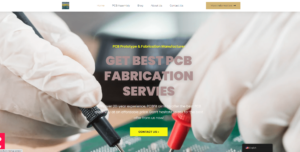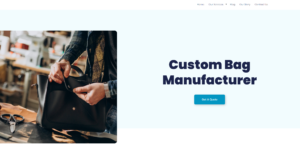Blog
15 Best Handbag Fabrics & Materials: Choose Your Ideal Fabrics
Custom handbags are nowadays less a fashion statement and more an essential item. The Handbag industry globally is valued beyond $52 billion, with estimations predicting it reaching upwards of $78 billion in the forthcoming years.
Despite their popularity, the wide array of Handbag fabrics and supplementary materials makes picking the perfect one quite challenging.
This write-up offers an insight into various Handbag materials’ upsides and downsides, as well as the supplemental components they carry.
Listing of 10 Handbag Fabrics
Roughly 90% of Handbags are synthetic fabric made as they provide a cost-effective alternative to natural ones while achieving identical functionality.
The most prevalent fabrics include:
- PVC Leather
- PU Leather
- Nylon
- Cotton
- Polyester
- Denim
- Tweed
- Burlap
- Felt
- Velvet
PVC Leather
PVC Leather, another synthetic variant like PU leather, has multiple underlying layers. PU leather consists of 2 layers – a split leather backing base and an upper layer of plastic coating. Yet PVC leather includes 4 layers, translating to a fabric leather backing base, foam layer, skin layer, and lastly, a “polyvinyl chloride” plastic coating.
Pros
- Waterproof
- Comes in many colors
- More affordable than PU leather
- Superior in stain and mildew resistance compared to PU leather
- More durable than PU leather
Cons
- Inflammable
- Lacks breathability
- Non-stretchable
- Needs hand cleaning
- Its thickness imparts less flexibility than PU leather
PU Leather
PU leather, otherwise known as vegan leather, is a substitute to natural animal skin, sourced from a synthetic thermoplastic polymer called ‘polyurethane’.
Pros
- Waterproof and resistant to mildew
- Available in a range of colors
- Resembles real leather in texture and looks but is more affordable
- More resistant to cracks than real leather under sunlight
Cons
- Highly combustible
- Non-stretchable
- Cleaning by hand only
- Less durable than real leather
- Microporous, thereby offering lower breathability than real leather
Nylon
Nylon feels soft, smooth, and silk-like and is typically derived from petroleum products.
Pros
- Inexpensive
- Resistant to shrinkage, abrasion, and wrinkles
- Withstands mildew
- More elastic and robust than polyester
- Greater flame resistance than cotton
Cons
- Not water-resistant
- Pricier than polyesters
- Resists sunlight poorly
- Not resistant to stains and dirt
- Despite being flame-resistant, it can melt and stick to skin
Cotton Fabric
Cotton can be interwoven into a variety of patterns, with plain-woven cotton known as muslin, while a twill-woven variant is termed as denim.
Pros
- Durable
- Breathes well
- Exhibits medium stretchability
- Better to touch than burlap fabric
- More affordable than linen, wool, and silk
Cons
- Not waterproof
- Prone to mildew
- Shrinks considerably in the initial wash
- Easy to stain
- Synthetic materials resist fading under sunlight better than cotton
Polyester Fabric
Polyester, a manufactured thermoplastic, results from a chemical reaction involving petroleum, air, and water. It is found more commonly than other natural and synthetic materials.
Pros
- Economical
- Repels shrinkage & mildew
- Breathes well & exhibits medium stretchability
- Superior wrinkle resistance than cotton
- More durable than most other fabrics
Cons
- Not water-repellent
- Nylon surpasses polyester in strength
Denim Fabric
Denim fabric, often known as jean fabric, arises from weaving twilled cotton known as twill pattern. Denim is extremely popular for crafting jeans, jackets.
Pros
- Washable
- Highly breathable
- Superior wrinkle resistance
- Dyable into any color
- 100% recyclable
- Highly resistant to abrasion
Cons
- Not water-resistant
- Shrinks, but slowly
- Resists stains and dirt poorly
- Burns slowly with high flames
- Fades under direct sunlight, albeit not rapidly
Velvet Fabric
Velvet fabric falls behind only natural silk in terms of softness and smoothness. It possesses a densely spread pile of cut threads in a woven fabric and can be made from both natural and synthetic fibers.
Pros
- Luxurious look
- Highly breathable
- Comes in an array of colors
- Resistant to mold and mildew
- Soft surface
Cons
- Difficult to clean
- Tends to soak up moisture
- Not resistant to sunlight
- Cannot resist stain and dirt
- Hot water can distort fabric shape
Tweed Fabric
Tweed fabric, predominantly woven from wool, can also be produced from a mix of wool and cotton, wool and rayon, and wool and other synthetic fibers. Its applications are primarily in manufacturing coats and sofa upholstery.
Pros
- Resistant to wrinkles
- Hides stains effectively
- Dyeable into any color
- Highly durable; can last multiple years
- Flame retardant
Cons
- Costly
- Non-waterproof
- Low breathability
- Fades slowly under direct sunlight
- Requires careful washing
Fabric of Felt
Felt is a material produced by compressing, tangling, and solidifying fibers together, contrasting traditional fabric weaving methods. The origins of felt can be traced to natural resources like wool and animal fur, or to synthetics like plastic.
Pros
- Economical
- Pleasant to touch
- Inherently flame-resistant
- Available in all hues
Cons
- Non-waterproof
- Not resistant to stains and grime
- Tends to shrink when exposed to water, particularly hot
Jute Fabric
Often referred to as Burlap fabric, Jute is a type of textile constructed from the durable sisal fiber or elements of the jute plant, sometimes blended with additional parts.
Pros
- Resilient
- Offers excellent air circulation
- Minimal stretch
- Less pricey than cotton, though more expensive than artificial substances
Cons
- Lacks water resistance
- Highly combustible
- Neither stain nor mildew-proof
- Loses color under sunlight promptly
- Requires hand washing in cold water only
Conclusion
Navigating the world of handbag materials calls for a clear understanding of the different fabrics’ advantages and disadvantages. From synthetic options like PU Leather, PVC Leather, Nylon, and Polyester to natural fabrics like Cotton, Velvet, and Jute, each material offers unique attributes. Furthermore, Denim, Tweed, and Felt offer various utility and style features to consider. While choosing your fabric, remember to factor in aspects such as durability, breathability, stain resistance, and cost. You can always turn to BagManufacturer for help.
With in-depth knowledge of each fabric, you can make an informed decision that best aligns with your functionality, style, and budget preferences in handbag selection.
Share:
More Posts

How to Create Multiple Pages in WordPress [2024 Updated]
Blog How to Create Multiple Pages in WordPress? Creating a robust online presence often requires publishing a multitude of pages that cater to different audiences,

PCBPit Review: Let’s Talk About Its PCB Assembly Service
Blog PCBPit Review: Let’s Talk About Its PCB Assembly Service In the dynamic world of electronics, the heart that keeps our devices beating

10 Best Bag Manufacturers in China
Blog 10 Best Bag Manufacturers in China: Customize Your Bags Effortlessly 1. BagManufacturer BagManufacturer.net stands out as a bag manufacturer in China known for bespoke

The Custom Bag Company Review: Unveiling Quality and Personalization
Blog The Custom Bag Company Review: Unveiling Quality and Personalization With roots well-anchored in diverse geographical sites across North America and beyond, The Custom Bag
